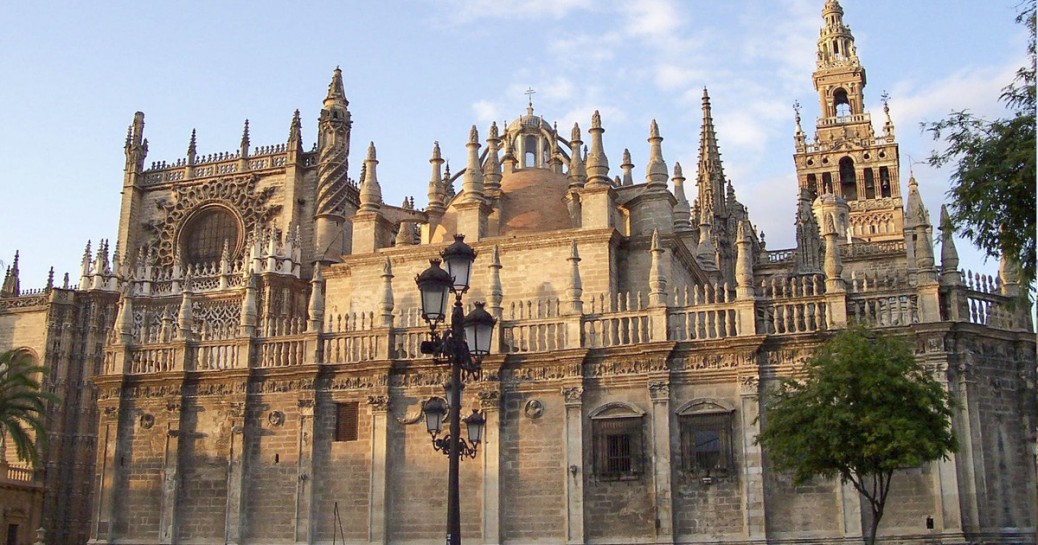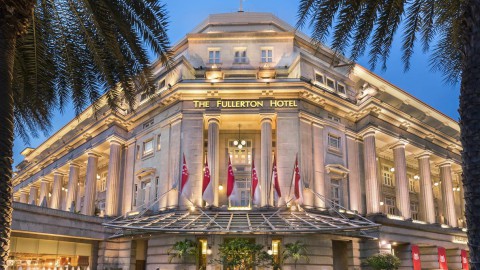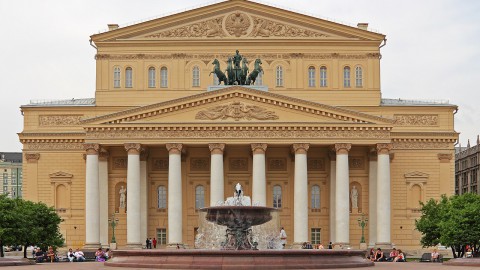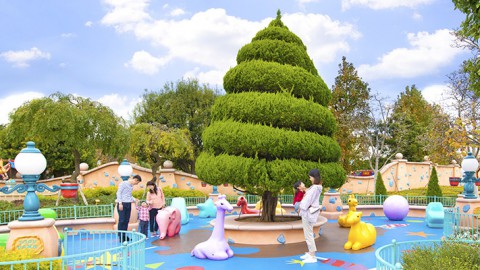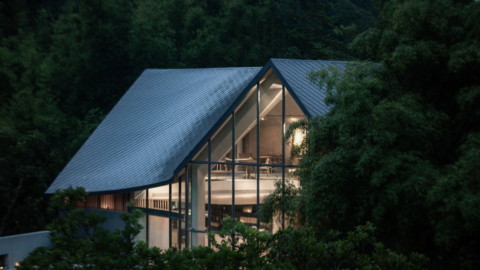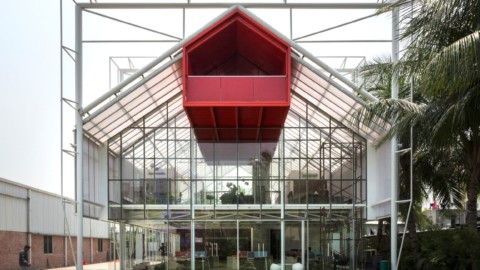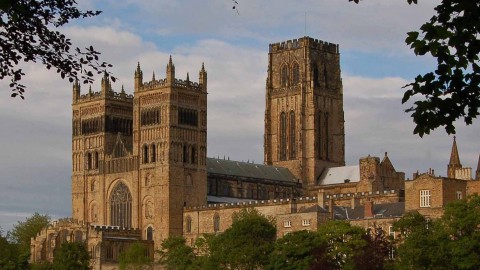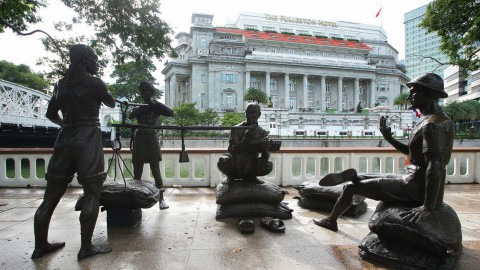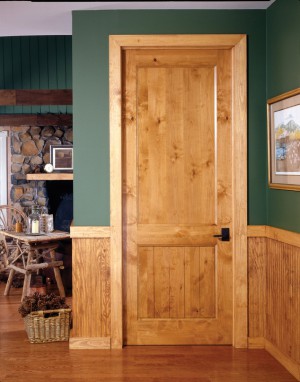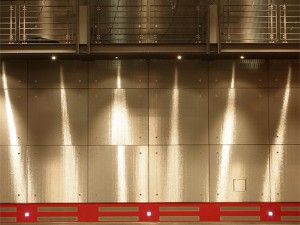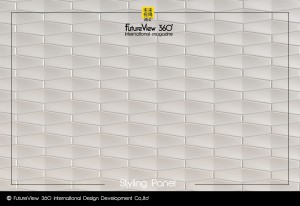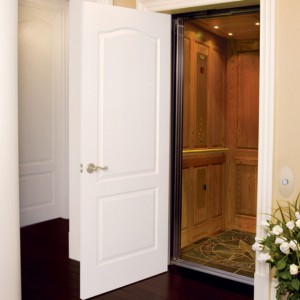Seville Cathedral 塞維利亞大教堂

The Cathedral of Saint Mary of the See (Spanish: Catedral de Santa María de la Sede), better known as Seville Cathedral, is a Roman Catholic cathedral in Seville (Andalusia, Spain). It was registered in 1987 by UNESCO as a World Heritage Site, along with the adjoining Alcázar palace complex and the General Archive of the Indies. “See” refers to the episcopal see, i.e., the bishop’s ecclesiastical jurisdiction. It is the third-largest church in the world as well as the largest Gothic church.
After its completion in the early 16th century, Seville Cathedral supplanted Hagia Sophia as the largest cathedral in the world, a title the Byzantine church had held for nearly a thousand years. The total area occupied by the building is 23,500 square metres (253,000 sq ft). The Gothic section alone has a length of 126 metres (413 ft), a width of 83 metres (272 ft) and its maximum height in the center of the transept is 37 metres (121 ft). The total height of the Giralda tower from the ground to the weather vane is 96 metres (315 ft). Since the world’s two largest churches (the Basilica of the National Shrine of Our Lady of Aparecida and St. Peter’s Basilica) are not the seats of bishops, Seville Cathedral is still the largest cathedral in the world.
Seville Cathedral was the site of the baptism of Infant Juan of Aragon in 1478, only son of the Catholic Monarchs Ferdinand II of Aragon and Isabella I of Castile. Its royal chapel holds the remains of the city’s conqueror Ferdinand III of Castile, his son and heir Alfonso the Wise and their descendant king Peter the Cruel. The funerary monuments for cardinals Juan de Cervantes and Pedro González de Mendoza Quiñones are located among its chapels. Christopher Columbus and his son Diego are also buried in the cathedral.
The Archbishop’s Palace is located on the northeastern side of the cathedral.
See of Saint Mary大教堂(西班牙語:Catedral deSantaMaríadela Sede),又名塞維利亞大教堂,是塞維利亞(西班牙安達盧西亞)的羅馬天主教大教堂。它於1987年被聯合國教科文組織列為世界遺產,以及毗鄰的阿爾卡薩宮殿建築群和印度的一般檔案館。 “見”是指主教的看見,即主教的教會管轄權。它是世界上第三大教堂,也是最大的哥特式教堂。
在16世紀初建成後,塞維利亞大教堂取代了聖索非亞大教堂,成為世界上最大的教堂,拜占庭教堂已經舉辦了將近一千年。該建築佔地總面積為23,500平方米(253,000平方英尺)。僅哥特式部分的長度為126米(413英尺),寬度為83米(272英尺),其中心的最大高度為37米(121英尺)。 Giralda塔從地面到風向標的總高度為96米(315英尺)。由於世界上最大的兩座教堂(阿帕雷西達聖母大教堂和聖彼得大教堂)不是主教的座位,塞維利亞大教堂仍然是世界上最大的教堂。
塞維利亞大教堂是1478年阿拉貢嬰兒胡安的洗禮地點,是阿拉貢的天主教君主費迪南德二世和卡斯蒂利亞的伊莎貝拉一世的兒子。它的皇家禮拜堂藏有卡斯蒂利亞城市征服者費迪南德三世的遺骸,他的兒子和繼承人阿方索和他們的後裔國王彼得殘酷。樞機主教Juan de Cervantes和PedroGonzálezdeMendozaQuiñones的陪葬紀念碑位於其教堂之中。克里斯托弗·哥倫布和他的兒子迭戈也被埋葬在大教堂裡。
大主教宮位於大教堂的東北側。
Location:Seville
Country:Spain
Denomination:Roman Catholic Church
History
Status:Cathedral
Consecrated:1507
Architecture
Functional status:Active
Architect(s):Alonso Martínez, Pedro Dancart, Carles Galtés de Ruan, Alonso Rodríguez
Architectural type:church
Style:Gothic
Groundbreaking:1401
Completed:1528
Specifications
Length:135 metres (443 ft)
Width:100 metres (330 ft)
Nave width:15 metres (49 ft)
Height:42 metres (138 ft)
Number of spires :1
Spire height:105 metres (344 ft)
Administration
Archdiocese:Seville
Clergy
Archbishop:Juan Asenjo Pelegrina
UNESCO World Heritage Site
Official name:Cathedral, Alcázar and Archivo de Indias in Seville
Type:Cultural
Criteria:i, ii, iii, vi
Designated:1987 (11th session), modified 2010
Reference no.:383bis-001
State Party: Spain
Region:Europe and North America
Spanish Property of Cultural Interest
Official name:Catedral de Santa María de la Sede de Sevilla
Type:Real property
Criteria:Monument
Designated:29 December 1928
地點:塞維利亞
國家:西班牙
宗派:羅馬天主教會
歷史
狀態:大教堂
奉獻:1507
建築
功能狀態:有效
建築師:AlonsoMartínez,Pedro Dancart,CarlesGaltésdeRuan,AlonsoRodríguez
建築類型:教堂
風格:哥特式
開工:1401
完成:1528
產品規格
長度:135米(443英尺)
寬度:100米(330英尺)
中殿寬度:15米(49英尺)
高度:42米(138英尺)
尖頂數量:1
尖頂高度:105米(344英尺)
管理
大主教管區:塞維利亞
牧師
大主教:Juan Asenjo Pelegrina
聯合國教科文組織世界遺產
官方名稱:塞維利亞的Cathedral,Alcázar和Archivo de Indias
類型:文化
標準:i,ii,iii,vi
指定:1987年(第11屆),2010年修改
參考編號:383bis-001
締約國:西班牙
地區:歐洲和北美
西班牙文化利益屬性
官方名稱:Catedral deSantaMaríadela Sede de Sevilla
類型:不動產
標準:紀念碑
指定:1928年12月29日
Construction and history
Almohad mosque (1172–1248)
The Almohad caliph Abu Yaqub Yusuf ordered the construction of a new grand mosque for the city in 1172 on the south end of the city. The new mosque was dedicated in 1182, but was not completed until 1198. It supplanted the one built between 829 and 830 by Umar Ibn Adabbas on the site of the present-day collegiate church of Divino Salvador as the main prayer hall in the city. Larger and closer to the city’s alcázar, the mosque was designed by the renowned architect Ahmad ben Basso as a 113 x 135 m rectangular building with a surface of over 15,000 m², including a minaret and ablutions courtyard. Its prayer hall consisted of seventeen aisles oriented southward, perpendicular to its Qibla wall, in the manner of many mosques of Al-Andalus, including the mosque of Ibn Adabbas.
“Christianized mosque” (1248–1434)
Shortly after Seville’s conquest by Ferdinand III, Yaqub Yusuf’s mosque was converted into the city’s cathedral. Its orientation was changed and its spaces partitioned and adorned to suit Christian worship practices. The internal space was gradually divided into chapels by constructing walls in the bays along the northern and southern walls. Almost the entire eastern half of the cathedral was occupied by the royal chapel that would hold the bodies of Ferdinand, his wife and Alfonso the Wise.
Gothic cathedral (1434–1506, 1511–1517)
Seville Cathedral was built to demonstrate the city’s wealth, as it had become a major trading center in the years after the Reconquista in 1248. In July 1401, city leaders decided to build a new cathedral to replace the grand mosque that served as the cathedral until then. According to local oral tradition, the members of the cathedral chapter said: “Hagamos una Iglesia tan hermosa y tan grandiosa que los que la vieren labrada nos tengan por locos” (“Let us build a church so beautiful and so grand that those who see it finished will take us for mad”). The actual entry from 8 July 1401, recorded among others by Juan Cean Bermudes in 1801 but now lost, proposed building “una tal y tan buena, que no haya otra su igual” (“one so good that none will be its equal). Construction continued until 1506. The clergy of the parish offered half their stipends to pay for architects, artists, stained glass artisans, masons, carvers, craftsman and labourers and other expenses. Several factors, including royal resistance to the temporary relocation of the royal chapel delayed the start of construction until 1434. On that year, king John II of Castille allowed the temporary transportation of the royal bodies to the cathedral’s cloister for storage.
Five years after construction ended, in 1511, the crossing lantern, or cimborrio, collapsed and work on the cathedral recommenced. The crossing again collapsed in 1888, and work on the dome continued until at least 1903. The 1888 collapse occurred due to an earthquake and resulted in the destruction of “every precious object below” the dome at that time.
建設和歷史
Almohad清真寺(1172-1248)
Almohad哈里發Abu Yaqub Yusuf於1172年在該市南端訂購了一座新的大清真寺。新的清真寺於1182年投入使用,但直到1198年才完工。它取代了8月29日至830年之間由Umar Ibn Adabbas建造的一座建築,位於現在的Divino Salvador學院教堂的現場,作為該市的主要祈禱大廳。這座清真寺由著名建築師艾哈邁德·本·巴索(Ahmad ben Basso)設計,面積超過15,000平方米,包括一座尖塔和露台庭院。它的祈禱大廳由朝向南方的十七個過道組成,垂直於其Qibla牆,以Al-Andalus的許多清真寺的方式,包括Ibn Adabbas的清真寺。
“基督教清真寺”(1248-1434)
在塞維利亞被費迪南德三世征服後不久,亞奎布優素福的清真寺被改建成了這座城市的大教堂。它的方向發生了變化,其空間被劃分和裝飾,以適應基督教的崇拜習俗。通過在北牆和南牆的海灣中修建牆壁,內部空間逐漸被分為教堂。幾乎整個大教堂的東半部都被皇家禮拜堂所佔據,這座教堂將載有費迪南德,他的妻子和智者阿方索的屍體。
哥特式大教堂(1434-1506,1511-1517)
塞維利亞大教堂的建造是為了展示這座城市的財富,因為它在1248年的Reconquista之後的幾年裡成為了一個主要的貿易中心。1401年7月,城市領導人決定建造一座新的大教堂,以取代作為大教堂的大清真寺。然後。根據當地的口頭傳統,大教堂章節的成員說:“Hagamos una Iglesia tan hermosa y tan grandiosa que los que la vieren labrada nos tengan por locos”(“讓我們建造一座如此美麗而宏偉的教堂,讓那些看到的人它完成將帶我們瘋狂“)。實際入口從1401年7月8日開始,由Juan Cean Bermudes在1801年記錄,但現在已經丟失,建議建造“una tal y tan buena,que no haya otra suigual”(“一個如此優秀以至於沒有人會平等)。施工一直持續到1506年。教區的神職人員提供了一半的津貼來支付建築師,藝術家,彩色玻璃工匠,泥瓦匠,雕刻師,工匠和工人以及其他費用。有幾個因素,包括皇室抵抗皇家禮拜堂的臨時搬遷建造工程開始推遲到1434年。當年,卡斯蒂利亞國王約翰二世允許臨時運送皇家屍體到大教堂的修道院進行儲存。
施工結束五年後,在1511年,十字架燈籠或cimborrio倒塌,大教堂的工作重新開始。 1888年,十字路口再次坍塌,穹頂的工作一直持續到1903年。1888年的坍塌是由於地震造成的,導致當時穹頂下面的“每一塊珍貴物體”被毀壞。


Description
The interior has the longest nave of any cathedral in Spain. The central nave rises to a height of 42 metres (138 ft). In the main body of the cathedral, the most noticeable features are the great boxlike choir loft, which fills the central portion of the nave, and the vast Gothic retablo of carved scenes from the life of Christ. This altarpiece was the lifetime work of a single craftsman, Pierre Dancart.
The builders preserved some elements from the ancient mosque. The mosque’s sahn, that is, the courtyard for ablutions for the faithful to conduct their ritual cleansing before entering the prayer hall is known today as the Patio de los Naranjos. It contains a fountain and orange trees. However, the most well known is its minaret, which was converted into a bell tower known as La Giralda, and is now the city’s most well-known symbol.
描述
內部擁有西班牙任何大教堂最長的教堂中殿。 中央教堂中殿上升到42米(138英尺)的高度。 在大教堂的主體中,最引人注目的特徵是巨大的盒狀合唱團閣樓,充滿了教堂中殿的中央部分,以及來自基督生活的雕刻場景的巨大哥特式重建。 這件祭壇畫是一位工匠Pierre Dancart的終身作品。
建造者保留了古代清真寺的一些元素。 清真寺的薩恩,即在進入祈禱大廳之前為忠實信徒進行儀式清洗的庭院,今天被稱為Patio de los Naranjos。 它包含一個噴泉和橙樹。 然而,最著名的是它的尖塔,它被改造成一座名為La Giralda的鐘樓,現在是該市最著名的象徵。

Giralda
The Giralda is the bell tower of the Cathedral of Seville. Its height is 343 feet (105 m) and its square base is 23 feet (7.0 m) above sea level and 44 feet (13 m) long per side. The Giralda is the former minaret of the mosque that stood on the site under Muslim rule, and was built to resemble the minaret of the Koutoubia Mosque in Marrakech, Morocco. It was converted into a bell tower for the cathedral after the Reconquista, although the topmost section dates from the Renaissance. It was registered in 1987 as a World Heritage Site by UNESCO. The tower is 104.5 m in height and was one of the most important symbols in the medieval city. Construction began in 1184 under the direction of architect Ben Ahmad Baso. According to the chronicler Ibn Sahib al-Salah, the works were completed on 10 March 1198, with the placement of four gilt bronze balls in the top section of the tower. After a strong earthquake in 1365, the spheres were missing. In the 16th century the belfry was added by the architect Hernán Ruiz the Younger; the statue on its top, called “El Giraldillo”, was installed in 1568 to represent the triumph of the Christian faith.
吉拉達
吉拉達是塞維利亞大教堂的鐘樓。它的高度為343英尺(105米),其方形底座高出海平面23英尺(7.0米),每側長44英尺(13米)。 Giralda是清真寺的前尖塔,位於穆斯林統治下的遺址上,其建造類似於摩洛哥馬拉喀什Koutoubia清真寺的尖塔。在Reconquista之後,它被改建成了大教堂的鐘樓,儘管最頂層的部分可以追溯到文藝復興時期。它於1987年被聯合國教科文組織列為世界遺產。塔高104.5米,是中世紀城市最重要的標誌之一。建築始於1184年,由建築師Ben Ahmad Baso領導。根據編年史家Ibn Sahib al-Salah的說法,這些作品於1198年3月10日完成,在塔頂部放置了四個鍍金青銅球。在1365年的強烈地震之後,球體不見了。在16世紀,鐘樓由建築師HernánRuizthe Younger添加;頂部的雕像名為“El Giraldillo”,於1568年安裝,代表了基督教信仰的勝利。

FROM:https://en.wikipedia.org/wiki/Seville_Cathedral
FROM:Sevilla, Spain: Gothic Cathedral
FROM:Seville Cathedral Spain in 4K
Don’t you think it’s addictive?
Want to know more about the beauty of architecture?
Come and join our members to explore the beauty of architectural design.
覺得看得不過癮嗎?
想要知道更多建築之美嗎?
快來加入我們的會員,一同探索建築設計之美。
The above article is purely for appreciation and sharing purposes, as well as the construction of new technology and the public can be in-depth understanding of the information at the same time there are sources, will be able to query, no use of the document as a commercial transaction, if illegal, please inform the We will immediately remove the site, thank you for cooperation.
以上文章純粹作為欣賞及分享用途,以及將建築新型技術傳遞給與大眾能夠深入了解,同時資料還有來源,將可查詢,絕無使用該文件資料作為商業交易行為,如有違法請務必告知該網站我們將立即處理撤除,謝謝合作。

